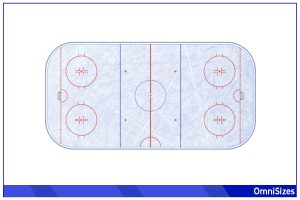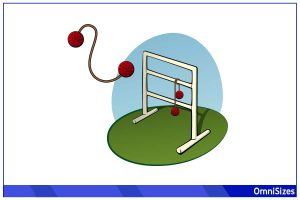Baseball card sizes have evolved as a reflection of the sport’s history and the tastes of collectors. From their inception in the late 1800s until the present day, these cards have been cherished keepsakes, representing players from various eras and capturing iconic moments in baseball.
Standard baseball card sizes traditionally measure 2.5 × 3.5 inches or 6.35 × 8.89 centimeters. However, as the hobby grew, variations emerged, leading to a rich tapestry of dimensions reflecting different eras and special editions.

This guide will go into more detail regarding baseball card dimensions and how they have changed over time.
Standard Baseball Card Sizes
Collecting baseball cards is a beloved hobby for many, spanning generations of fans and players. While there have been variations, the dimensions have largely remained faithful to a familiar standard.
The 2.5 × 3.5 inches or 6.35 × 8.89 centimeters dimension is widely recognized as the standard size for baseball cards. This format was popularized in the 1950s, predominantly by the Topps Company.
Before this size was standardized, cards came in various shapes and sizes. But with the need for uniformity in production, storage, and display, the 2.5 × 3.5 inches dimension became the norm. This size was not only easy to handle but was also convenient for storing in protective sleeves and albums.
Vintage Card Sizes
Baseball cards are a window into the past that have captured iconic moments and legendary players. The vintage era of baseball cards, spanning from the late 1800s to the mid-1900s, offers a diverse range of sizes and designs.
Tobacco Cards (T-Series)
In the early days of baseball card collecting, cigarette companies were among the first to produce and distribute cards, primarily as inserts to promote their products. These cards, often referred to as T-cards, became highly sought after.
Brands such as Allen & Ginter and Old Judge were pioneers in this trend, using cards to both market their products and feed the growing appetite for baseball memorabilia.
T-cards typically measured around 1.4 × 2. 5 inches. However, there were exceptions, as some brands opted for slightly larger or smaller cards. The designs often featured sepia or black and white photographs, while the backs typically had advertisements for the cigarette brand.
Cabinet Cards
Cabinet cards were premium items in the late 19th and early 20th centuries. Unlike the standard-sized cards, cabinet cards were larger photographic prints mounted on thick card stock. They were often given as special promotional items or sold directly to fans and collectors.
The standard dimension for cabinet cards was approximately 4.25 × 6.5 inches. However, variations existed, with some reaching up to 5 × 7 inches. The mounted card stock provided a sturdy base, making them more durable than their smaller counterparts. The back of the card might feature the photographer’s information or remain blank.
Gum Company Cards
By the 1930s, with the decline in tobacco card production, gum companies emerged as the leading producers of baseball cards. Brands like Goudey and Play Ball introduced cards as incentives to purchase their gum products.
Gum company cards were larger than tobacco cards, typically measuring around 2.5 × 3 inches, though some variations existed. The designs were vibrant, often featuring hand-colored photographs or illustrations of players.
Postcards and Exhibit Cards
During the early to mid-1900s, postcards and exhibit cards featuring baseball players became popular. These were often sold at ballparks, via mail order, or distributed at exhibitions. They were larger than standard cards and were often used for autographs.
Postcard sizes are generally 4 × 6 inches, while exhibit cards were slightly larger, around 3.25 × 5.25 inches. The designs ranged from action shots to posed photographs, often with blank backs suitable for autographs or personal messages.
Specialty and Limited Edition Sizes
Baseball card collecting is also about the thrill of finding unique pieces that stand out. Specialty and limited edition cards bring that excitement with sizes and designs that deviate from the norm.
Mini Cards
Mini cards are smaller versions of standard baseball cards. They emerged as a fun, alternative size, often catching the eye because of their diminutive stature.
Usually measuring around 2 × 3 inches or smaller, mini cards pack all the details of their larger counterparts but in a condensed form. Brands like Topps have frequently introduced mini versions of their main sets.
Die-Cut Cards
Die-cut cards break away from the conventional rectangular shape, featuring unique outlines and designs. The term “die-cut” refers to the method of using dies or molds to cut cards into various shapes.
The dimensions of die-cut cards can vary significantly, often determined by the design’s shape. Some might be similar in size to standard cards, while others could be larger or smaller based on the chosen design.
Jumbo Cards
Jumbo cards, as the name suggests, are oversized versions of regular baseball cards. They’re often released for special occasions or as promotional items.
While their sizes can differ, many jumbo cards hover around 5 × 7 inches. Their large size offers ample space for detailed graphics, player stats, and sometimes even autographs.
Relic and Patch Cards
Relic and patch cards contain a piece of memorabilia, such as a fragment of a player’s jersey, bat, or glove. These cards are thicker than standard cards to accommodate the relic.
Due to the embedded memorabilia, relic cards tend to be larger in terms of thickness rather than surface area. Typically, they maintain the standard 2.5 × 3.5 inches size but are noticeably thicker.
Digital Era and Card Dimensions
Digital baseball cards, accessible on computers and mobile devices, offer collectors a new way to engage with the hobby. While physical cards have tangible dimensions, digital cards are viewed on screens, so their size is often measured in pixels.
Standard digital cards typically follow the traditional 2.5 × 3.5 inches ratio but are displayed based on screen resolutions. High-resolution displays can showcase cards with crisp clarity, making even the tiniest details pop. Many platforms hosting digital cards also allow for zooming, letting collectors appreciate the intricacies of each design.
Furthermore, the digital space offers dynamic features. Animated cards or those with embedded video clips are gaining popularity. These interactive elements add a new layer to the collecting experience.






